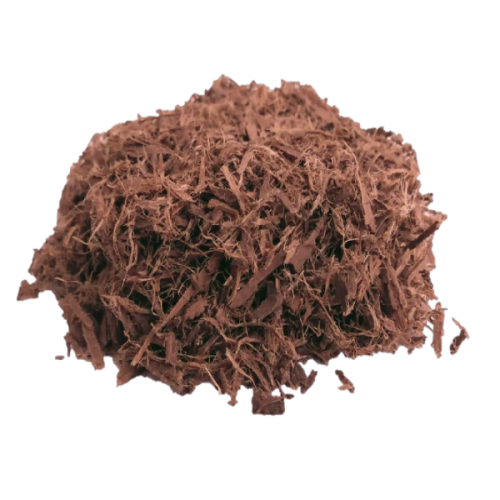Mimosa Hostilis Root Bark retains a significant area in common methods and fashionable botanical applications. This article explores the attributes, origins, and customary concerns encompassing this remarkable plant substance, with a particular concentrate on the prized Brazillian Mimosa Hostilis Root Barks.
What is Mimosa Hostilis Root Bark?
Mimosa Hostilis, scientifically referred to as Mimosa tenuiflora, is actually a perennial tree native to the northeastern area of Brazil and areas of Mexico. The basis bark of this tree has become utilised for centuries by indigenous communities for several simple and conventional functions. The interior root bark includes notable concentrations of tannins, alkaloids, along with other phytochemicals that contribute to its distinctive Qualities and purposes.
The tree alone is remarkably resilient, able to surviving in inadequate soils and drought circumstances. This hardiness contributes to the strong character in the bark and its chemical profile. When harvested sustainably, the outer root bark is cautiously separated to entry the valuable internal bark, that's then dried and geared up to be used.
Brazilian Mimosa Hostilis Root Bark: The Gold Standard
When talking about good quality in Mimosa Hostilis goods, the Brazillian Mimosa Hostilis Root Barks are normally deemed excellent while in the botanical sector. Several components add to this track record:
Exceptional Escalating Ailments
The specific soil composition, local weather, and ecosystem of Brazil's northeastern region make great problems for Mimosa tenuiflora to develop its whole chemical potential. The mineral-rich soils and particular pattern of rainfall and sunlight On this region look to boost the concentration of active compounds in the foundation bark.Conventional Harvesting Understanding
In locations in which Mimosa Hostilis continues to be made use of ordinarily, harvesters have designed subtle methods for sustainable harvesting that preserves both the tree as well as potency of your bark. This information, passed down via generations, ensures that the bark is gathered at the correct time of year and processed applying tactics that preserve its integrity.Exclusive Physical Characteristics
Brazilian Mimosa Hostilis Root Bark typically shows a wealthy reddish-brown to purple interior bark with a fibrous, dense texture. The visual properties normally serve as an initial indicator of top quality, with skilled users recognizing the distinct look of bark from this area.
Widespread Purposes and Works by using
The apps of Mimosa Hostilis Root Bark span equally standard and modern-day contexts, although it's essential to understand the lawful standing of those utilizes varies by region and jurisdiction.
Classic Craft and Practice
Indigenous communities have Traditionally employed Mimosa Hostilis Root Bark for producing purely natural dyes for textiles, with the bark making beautiful shades of purple, burgundy, and deep brown. The tannin-prosperous Homes also built it important for leather tanning and other useful apps.Modern day Botanical Investigation
Modern fascination in Mimosa Hostilis Root Bark extends to varied fields of botanical study, specially researching its chemical composition and opportunity programs. Scientists have recognized many exciting compounds in the bark that warrant additional scientific investigation.Horticultural and Agricultural Takes advantage of
In permaculture and sustainable agriculture, Mimosa tenuiflora is valued as being a nitrogen-fixing species that can strengthen soil high quality. The bark by itself, when processed, can be employed to be a organic mulch or soil Modification in specific agricultural contexts.Good quality Evaluation and Identification

For the people working with Mimosa Hostilis Root Bark, comprehension how to evaluate top quality is important. Significant-high quality content, specifically reliable Brazillian Mimosa Hostilis Root Barks, usually reveals specified characteristics:
The Visible visual appeal should really demonstrate a clear difference between the outer and inner bark, Using the internal bark displaying deep, lively colors. The fabric must have a characteristic earthy, marginally sweet aroma, absolutely free from musty or moldy notes. When processed, the bark should yield a good powder even though sustaining its fibrous framework until eventually grinding. Effectively dried bark should be brittle although not dusty, indicating proper dampness articles.
Frequently Requested Concerns (FAQs)
1. Exactly what is the difference between Mimosa Hostilis Root Bark from Brazil along with other areas?
Brazilian Mimosa Hostilis Root Bark is mostly considered remarkable because of the exceptional expanding situations in northeastern Brazil, which bring about bigger concentrations of Lively compounds. The normal harvesting methods made use of With this region also contribute to the general high-quality and potency of the final product.two. How ought to I store Mimosa Hostilis Root Bark to take care of its high-quality?
Shop the bark inside a great, dim, and dry put within an airtight container. Safety from gentle, humidity, and extreme temperature fluctuations may help maintain the bark's chemical integrity and stop degradation of its active factors.3. Is Mimosa Hostilis an endangered species?
No, Mimosa tenuiflora just isn't currently outlined as an endangered species. In actual fact, It is really known for its resilient development and skill to thrive in demanding conditions. However, accountable harvesting practices are still important to ensure the sustainability of wild populations.4. Can I develop Mimosa Hostilis beyond its native habitat?
Though Mimosa tenuiflora thrives finest in its native tropical local weather, it could be cultivated in comparable environments. The tree calls for perfectly-drained soil, a good amount of sunlight, and safety from frost. Having said that, the chemical profile of cultivated specimens may vary from wild-harvested Brazilian content.5. What is the authorized standing of Mimosa Hostilis Root Bark?
The lawful position differs considerably by region and jurisdiction. In certain areas, the raw bark is legal to have, whilst in Other individuals, unique extracts or preparations Premium Mimosa Hostilis may be controlled. Always investigation and adjust to local rules and regulations right before getting or applying any botanical material.Comprehending Mimosa Hostilis Root Bark, especially the quality Brazillian Mimosa Hostilis Root Barks, calls for appreciation of its botanical features, standard context, and suitable applications. No matter if for study, craftsmanship, or botanical study, this amazing plant materials proceeds to become a issue of desire across multiple fields, even though normally inside appropriate authorized and ethical boundaries.